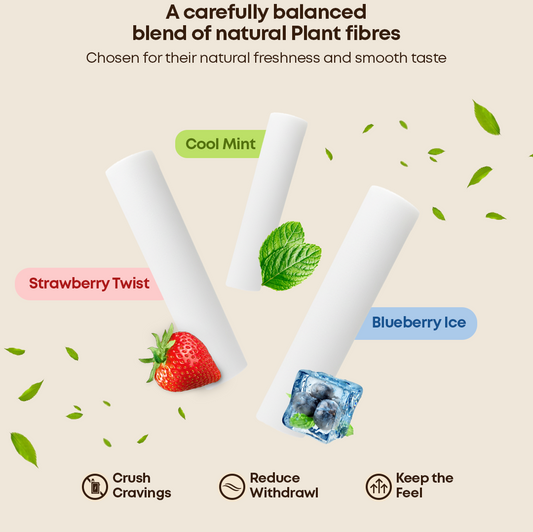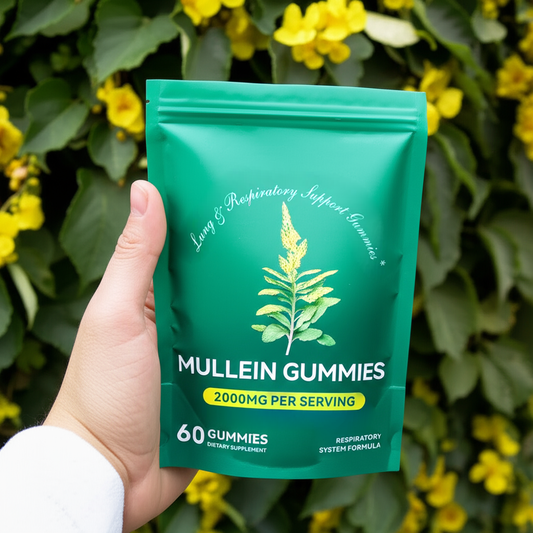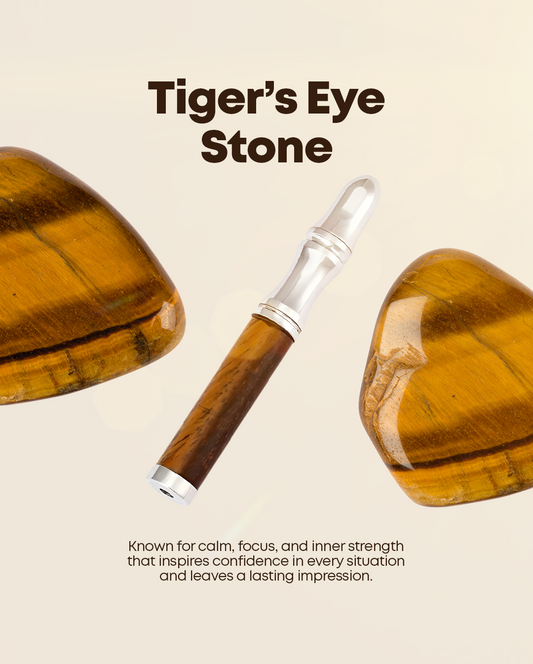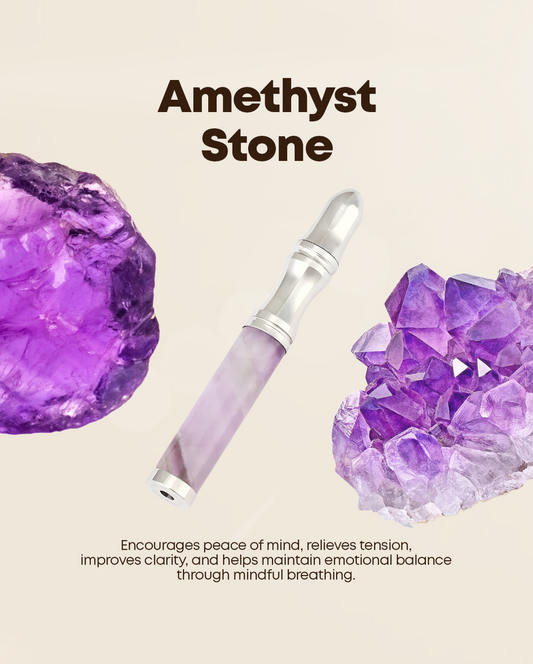Your hands won't stop shaking, you're sweating through your clothes like you just ran a marathon, and sleep?
What is that?
If you're currently Googling "why does quitting smoking feel like I'm being slowly tortured" at 2 AM while your body stages what can only be described as a full-scale rebellion, welcome to Uncle Nic withdrawal.
Nobody warns you about this shit…
Seriously, when you quit Nic, your body is going to act like a dramatic teenager who just got their phone taken away.
Every cell in your system is going to throw a tantrum because you had the audacity to stop feeding it the puffs.
…But they also don't tell you that there are actual, science-backed ways to make this hell significantly more bearable.
What Your Body Is Actually Doing to You Right Now (The Complete Picture)
Let's start with why you feel like you're slowly dying when you're actually getting healthier.
Your brain has been chemically hijacked by nic for however long you've been taking a puff, and now it's having what can only be described as a complete existential crisis.
Nic withdrawal symptoms fall into three main categories: physical (somatic), emotional (affective), and mental (cognitive).
Right now, you're probably experiencing all three simultaneously, which is why you feel like your entire system is malfunctioning.
The Shakes That Make You Look Nervous About Everything
Your hands are trembling because n i c o t i n i c receptors in your brain are firing randomly, desperately searching for their missing nic fix.
It's like your brain is frantically going through every drawer in the house looking for something that's not there anymore.
The science: Nicotine binds to α4β2 n i c o t i n i c acetylcholine receptors in brain areas like the medial habenula and interpeduncular nucleus.
When you quit, these receptors go into overdrive, causing involuntary muscle contractions and tremors (PMC Research, 2007).
Your cholinergic system – the network that controls muscle movement and coordination – is essentially having a glitch.
Sweating Like You're in a Sauna Wearing Winter Clothes
One minute you're freezing, the next you're sweating through your shirt in an air-conditioned room.
Your body's temperature regulation has basically gone on strike because uncle nic affects your hypothalamus – your internal thermostat.
…Without its chemical crutch, your temperature control is about as reliable as a broken air conditioner.
This isn't just uncomfortable – it's your autonomic nervous system struggling to maintain homeostasis without uncle nic's influence on neurotransmitter balance.
Headaches That Feel Like Your Brain Is Filing a Formal Complaint
These aren't your standard "need more coffee" headaches. These are the kind that make you wonder if your skull is too small for your brain.
They happen because nic withdrawal affects blood flow and neurotransmitter levels, particularly dopamine and serotonin pathways.
The headaches typically peak around day 3 of quitting which research shows is when nic receptors are most actively trying to readjust – and can stick around for weeks like an unwelcome houseguest (Cleveland Clinic, 2025).
The Digestive Rebellion (Your Stomach Has Officially Gone Rogue)
Constipation, nausea, abdominal cramps, your entire digestive system doesn't know what to do with itself.
This happens because uncle nic stimulates the vagus nerve that controls digestion.
Without it, your gastrointestinal system is like a factory that just lost its supervisor.
Some people can't eat anything, others can't stop eating, and some lucky folks get to experience both extremes.
Increased appetite is one of the most common withdrawal symptoms, affecting up to 70% of quitters (CDC, 2025).
Sleep That's More Like Lying Awake
You're exhausted but can't sleep. When you finally drift off, you wake up feeling like you got hit by a truck.
Uncle Nic affects your sleep architecture – specifically REM sleep patterns – and your brain needs time to remember how to sleep like a normal human being.
Sleep fragmentation peaks in weeks 1-2 and gradually improves, but the insomnia combined with vivid dreams can make you feel like you're losing your mind (Medical News Today, 2024).
The Cognitive Fog That Makes You Feel like your brain is buffering in real life.
Difficulty concentrating, impaired memory, increased reaction times – it's like your brain is running on dial-up while the rest of the world is on high-speed internet...
This happens because uncle nic artificially enhanced cognitive function by boosting dopamine and acetylcholine. Without it, your brain has to relearn how to focus naturally.
Research shows that cognitive symptoms can persist beyond the typical 3-4 week withdrawal period for some individuals, particularly those with genetic variants that affect n i c o t i n i c receptor function (Frontiers in Psychiatry, 2023).
The Solutions That Actually Work (Instead of Just Telling You to ‘’Drink Water and Stay Strong")
Solution #1: BreatheFree Resistance Necklace (HINT: It’s A Game Changer)
Before we get into all the other tactics, let's start with what has actually helped 75,000+ people survive withdrawal without turning into the kind of person who yells at inanimate objects:
The BreatheFree Resistance Necklace .(This isn't another patch that falls off in the shower. )
BreatheFree works WITH your withdrawal symptoms instead of fighting them, addressing both the physical and psychological aspects simultaneously.
How it stops your specific symptoms:
The resistance coil gives you that satisfying drag your muscle memory is screaming for, which reduces the shakes and restlessness.
Your hands get to do the familiar motion without poisoning your lungs.
It has natural citrus oils (lemon, orange, lime) and linalool oxide from lavender that work directly on your nervous system to calm anxiety, reduce nausea, and stabilize mood swings.
These compounds have been shown to modulate GABA receptors and reduce cortisol levels – essentially giving your stressed-out brain some backup.
It has 6 flavored cores (Strawberry Twist, Blueberry Ice, Cool Mint, Raspberry Zing, Lemon Drop Ice, Coffee Rush) give your brain something new to obsess over instead of withdrawal symptoms.
Each core lasts 400 puffs – days of relief for less than you'd spend on a single pack of cigarettes.
Why this works when everything else fails: Most quit methods try to fight your brain's wiring. BreatheFree works with it.
Your brain wants the ritual, the hand-to-mouth motion, the satisfying inhale – so we give it all of that, just without uncle nic. It's behavioral substitution backed by aromatherapy science.
Solution #2: The Coffee Secret Many People Don’t Know About.
Cut your caffeine by 50% immediately. This isn't optional wellness advice – it's pharmacokinetics.
When you take a puff, Cigs induce liver enzyme CYP1A2, which breaks down caffeine faster. This is why Cig heads can drink coffee all day without vibrating out of their skin.
But when you quit, that enzyme activity drops back to normal levels.
Translation: your usual coffee now hits like you just mainlined espresso directly into your bloodstream.
Studies show caffeine levels can increase by up to 56% after quitting if you don't adjust intake (PubMed, 2023).
This causes palpitations, anxiety, tremors, and "wired-but-tired" insomnia that people mistake for withdrawal symptoms.
What to do: Cut coffee, tea, and energy drinks in half. If you drink 4 cups, drop to 2. If you're a Red Bull addict, switch to half-caf or green tea. You'll feel calmer within 48 hours – it's like magic, except it's just science.
Solution #3: The 2-Minute Trick That Stops Restlessness
When you feel like you need to do something with your hands or you'll lose it completely: The Isometric Protocol:
- Squeeze a stress ball at 30% strength for 2 minutes (actually time it)
- Rest 1 minute
- Repeat 3-4 times
The science behind this: Small randomized trials found this reduces withdrawal urges for up to 30 minutes by temporarily raising blood pressure, then creating a calming rebound effect that activates your parasympathetic nervous system (ResearchGate, 2023).
If you're in public, do wall sits or thigh squeezes for 60-90 seconds. Same principle, fewer weird looks from coworkers.
Solution #4: Black Pepper Aromatherapy (Sounds Weird, Actually Works)
In a legitimate randomized controlled study, people who inhaled vaporized black pepper essential oil had significantly reduced cigs cravings and withdrawal sensations compared to those who inhaled mint or nothing (PubMed, 2019).
Why? It stimulates the trigeminal nerve – the same nerve that gives you the "hit" feeling when you take a puff.
It's like tricking your brain into thinking it got what it wanted without actually poisoning yourself.
How to use it: Get black pepper essential oil and a personal inhaler. Add 10-15 drops, inhale when symptoms hit. The effect is immediate and can last 20-30 minutes.
Solution #5: The Sour Candy Interrupt
Very sour candies – Warheads, sour patch kids – can stop withdrawal waves by hijacking your attention through intense sensory overload.
The mechanism: Extremely sour tastes activate your trigeminal and gustatory nerves so strongly they force your brain to focus on something other than withdrawal. Your brain gets so busy processing "HOLY HELL THIS IS SOUR" that it forgets to be cranky about uncle nic.
Community reports from Reddit's r/stopsmoking consistently mention this technique, and while there aren't large clinical trials, the neurological mechanism is sound and the risk is minimal.
Solution #6: Advanced Strategies for Severe Cases
- Preloading Strategy (For Repeat Failures)
If you've tried quitting before and failed, consider starting nic patches 2-4 weeks before your quit date. This "preloading" approach dampens the rewarding hit from cigs and lessens early withdrawal by partially occupying α4β2 receptors.
The evidence: Cochrane reviews show this reduces withdrawal severity compared to starting NRT on quit day (Cochrane Library, 2023). It's like easing into a cold pool instead of jumping in.
- Genetic Personalization (The Future Is Now)
Your nic metabolite ratio (NMR) – a simple blood or saliva test – can predict which treatments will work best for you.
Fast metabolizers typically have more severe withdrawal and do better with varenicline, while slow metabolizers do fine with patches and have fewer side effects.
This biomarker-guided approach is available in some cessation clinics and research settings, and it's like having a genetic cheat code for quitting (The Lancet, 2023).
- Cytisinicline (The Gentler Alternative)
If you've tried varenicline (Chantix) and couldn't tolerate the side effects, there's a newer plant-derived option called cytisinicline.
Recent Phase 3 trials show it reduces withdrawal symptoms and cravings with better tolerability than varenicline (JAMA Network, 2024).
Solution #7: The Quirky Tactics That Actually Help
- Capsaicin for Oral Fixation
Older experimental work found that adding capsaicin to very low-nice cigs reduced puffing and cravings through sensory substitution. While there aren't modern trials testing chili lozenges for withdrawal, the logic is sound – intense oral sensations can satisfy the need for stimulation (Duke University, 2020).
- Cold Exposure Therapy
Emerging research suggests cold showers or ice baths may help with withdrawal by stimulating the sympathetic nervous system and boosting dopamine naturally. It's not a cure, but it's a tool that some people swear by.
- Digital Support
A randomized trial of Quit Genius (clinician-supported CBT via app) showed better outcomes than standard care, with users reporting smoother withdrawal because dosing and timing get adjusted in real-time (PMC Oxford Academic, 2023).
The Timeline (So You Know When This Nightmare Ends)
Hours 4-24: AKA The Opening Act
Symptoms begin as nic levels drop. Cravings start, anxiety creeps in, you might feel restless. You're probably still thinking this won't be that bad.
Days 1-3: Peak Hell
All symptoms hit hardest. Day 3 is typically rock bottom when nic receptors are most actively trying to readjust. This is when most people break if they're going to.
Week 1-2: The Slow Climb
Symptoms improve but sleep is still garbage. You might experience "smoker's flu" – fatigue, aches, general malaise. Your body is working overtime to repair itself.
Weeks 3-4: Light at the End of the Tunnel
Most symptoms fade, sleep normalizes, you start feeling human again. Some people have lingering cognitive effects, but the worst is behind you.
Special Considerations for Mental Health
If you have PTSD, depression, or anxiety disorders, expect more severe withdrawal symptoms with heightened anxiety and mood disruption. This isn't weakness – it's biology.
Consider integrated mental health and addiction treatment approaches (Tobacco Prevention & Cessation Journal, 2023).
This is Your Complete Action Plan
Week -2 to 0 (Preparation Phase):
- Get BreatheFree necklace
- Cut caffeine by 50% and monitor response
- Stock sour candy and black pepper oil
- Consider preloading patches if you've failed before
- Warn family/friends you might be temporarily on edge, ready to argue with the toaster 'if it looks at me the wrong way.'
Days 1-7 (Hell Week):
- Use BreatheFree at first sign of any craving
- Grip exercises every 2-3 hours
- Monitor caffeine sensitivity daily
- Expect day 3 to be worst, plan accordingly
- Remove patches at night if they affect sleep
Weeks 2-4 (Recovery Phase):
- Continue necklace use as needed
- Gradually return to normal caffeine if desired
- Celebrate improvements (better breathing, more energy)
- Stay vigilant for trigger situations
Why Most People Fail (And How to Not Be One of Them)
The dirty secret about quitting is that most people try to white-knuckle through withdrawal with pure willpower. That's like trying to stop a freight train by standing in front of it and thinking positive thoughts.
Your brain has been chemically rewired by uncle nic. Those receptors aren't going to politely disappear just because you decided to quit.
They're going to fight back with every symptom they can muster.
The people who succeed don't have superhuman willpower – they have better tools. They work WITH their brain's wiring instead of against it. They expect symptoms, plan for them, and have multiple strategies ready.
The 75,000-person secret: BreatheFree users aren't stronger than you. They just found something that addresses both physical and psychological withdrawal simultaneously.
Your Next Move
The BreatheFree Resistance Necklace is currently 50% off with Buy 1 Get 1 Free – two necklaces for $41.10.
That's less than you spend on Cancer sticks weekly, and it comes with a 30-day money-back guarantee.
Physical withdrawal symptoms are temporary – they have an expiration date. But freedom from addiction? That lasts forever.
[Get BreatheFree Now - Buy 1 Get 1 Free - $41.10]
Only 123 left in stock. Don't let withdrawal win because you waited.
Sources:
- PMC Research, 2007 (Nicotine receptor mechanisms)
- PubMed, 2023 (Caffeine-nicotine interactions)
- Cleveland Clinic, 2025 (Withdrawal timeline)
- CDC, 2025 (Common symptoms)
- Medical News Today, 2024 (Sleep disruption)
- Frontiers in Psychiatry, 2023 (Cognitive effects)
- ResearchGate, 2023 (Isometric exercise)
- Cochrane Library, 2023 (Preloading evidence)
- The Lancet, 2023 (Genetic factors)
- JAMA Network, 2024 (Cytisinicline trials)
- PMC Oxford Academic, 2023 (Digital therapeutics)









